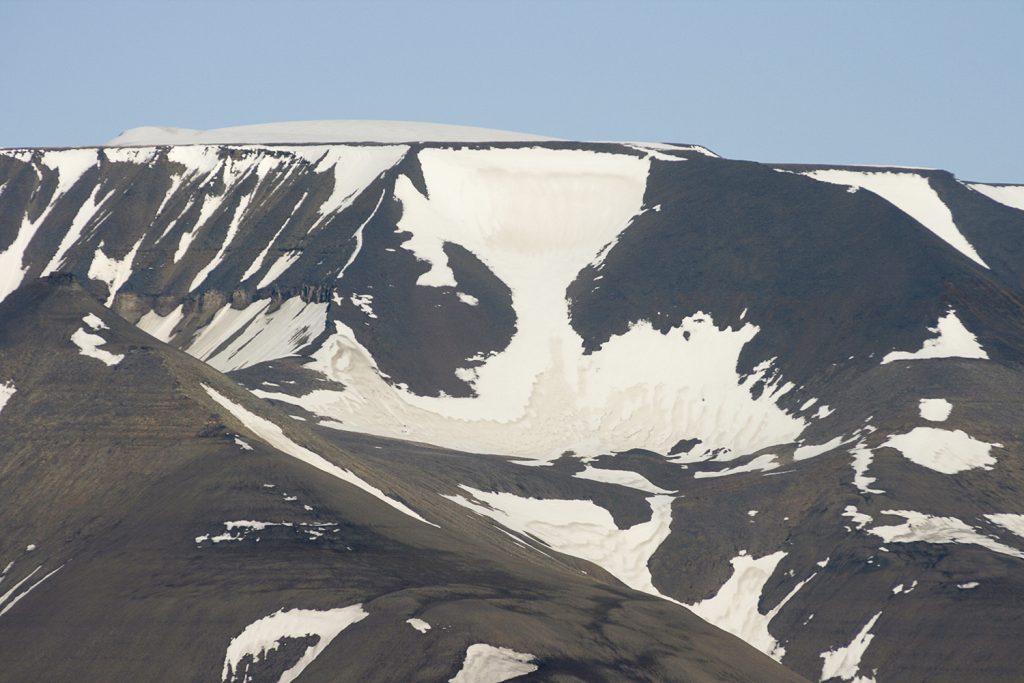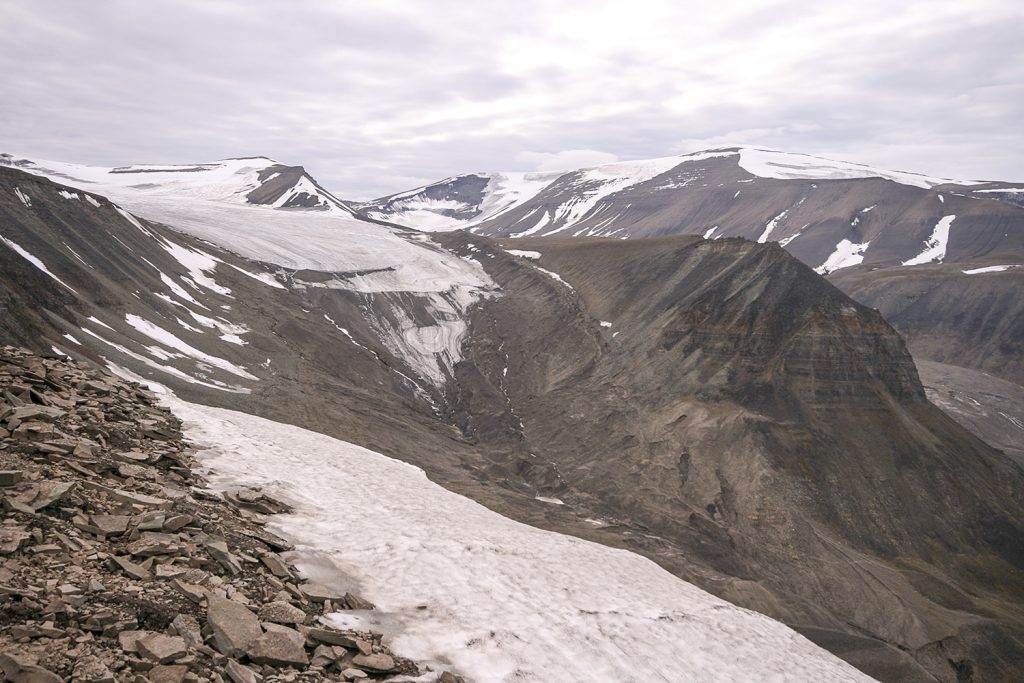Within Spitsbergen, the surroundings of Longyearbyen enjoy a rather dry and relatively mild climate and thus show a very moderate degree of glaciation with only 18 % of the land area. Most of the glaciers are smaller, isolated valley glaciers.

There are different mechanisms by which glaciers can move. The ice mass can slide downslopes as a whole block. This works only if the glacier is „warm“, which means that the temperature is at the pressure melting point near 0°C. Then, there is a thin water layer between the ice and the underlying bedrock, which can serve as a lubricant. This mechanism of movement, called basal gliding, is quite efficient and can result in velocities of several hundred metres per year or, in certain cases, even more.
Huge ice masses sliding across a rock surface can cause strong erosion.
An important reason for the glacier ice to be „warm“ (or temperate) is the summer meltwater that percolates into the snow cover that remains on the glacier in its higher parts. Not being able to run off, the meltwater penetrates into the ice body to re-freeze near the bottom, emitting melting heat and thus warming up the surrounding ice.
The temperature of cold glaciers is completely below the pressure melting point. Cold glaciers are frozen solid to the underlying ground and can only move by means of internal deformation under the influence of gravity. This kind of movement is much slower than basal gliding and results in velocities of only a few metres per year. Internal deformation does not cause any erosion: Cold glaciers can even preserve pre-glacial landscapes. In the case of Longyearbreen, the part of the valley that is ice-filled has still got a V-shaped cross section that was created by a river in pre-glacial times. The glacier has, so far, not been able to modify the shape of the cross section significantly.
The glaciers near Longyearbyen are relatively small and thin and accordingly completely cooled down below the pressure melting point by the severe winter temperatures. Longyearbreen has a maximum thickness of 115 metres and is moving with 2 to 4 metres per year.
Isgrotta på Longyearbreen, Longyearbyen, Svalbard, Norway
Bassen, Svalbard, Norway


